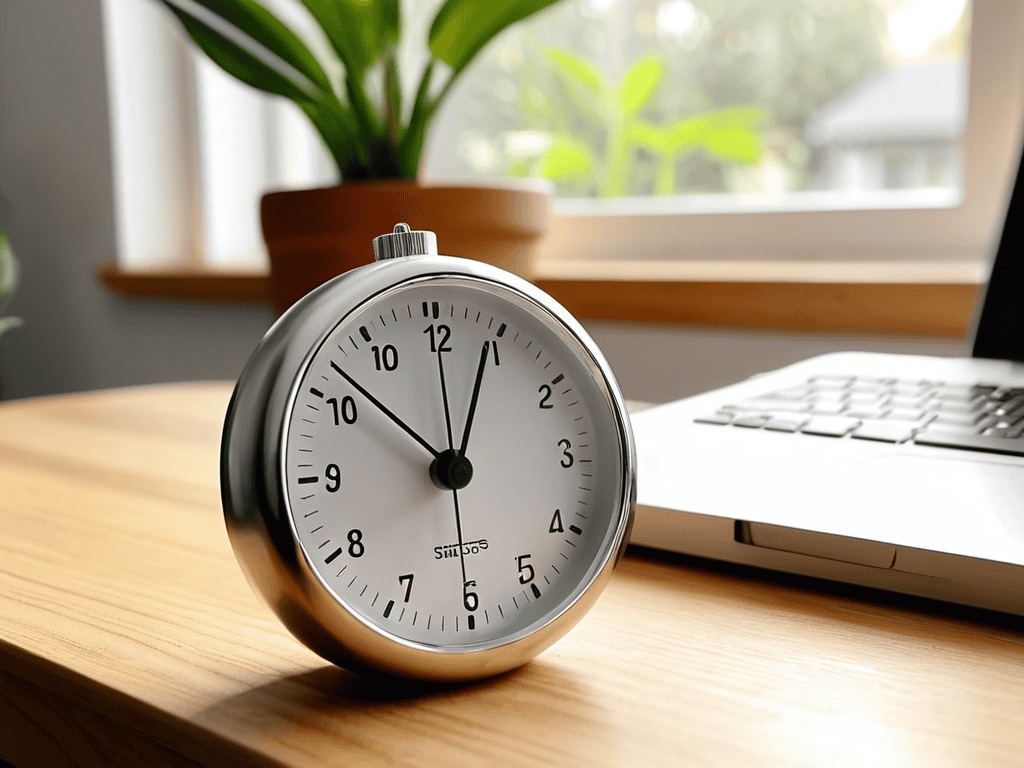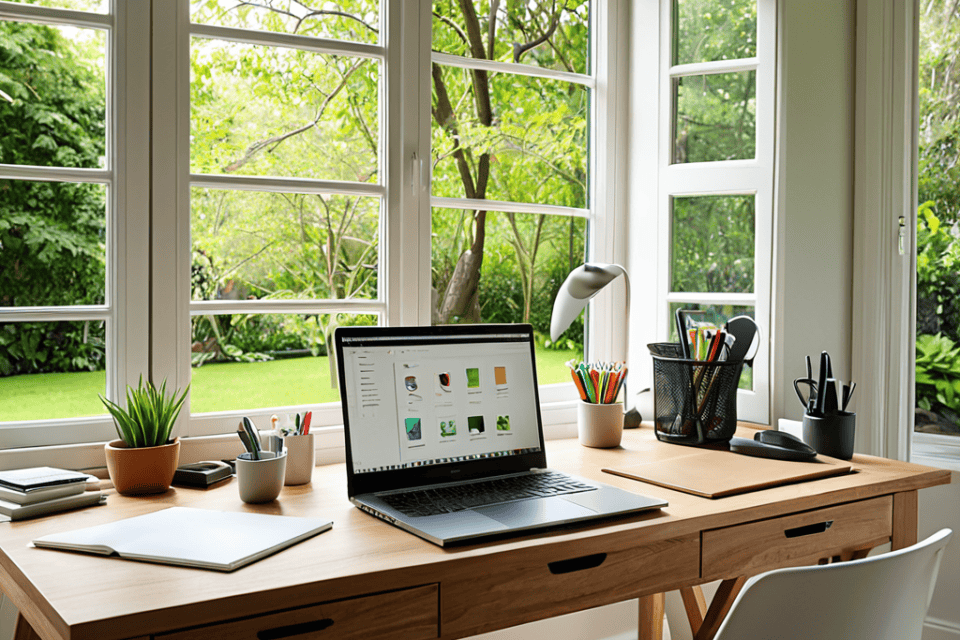I still remember the day I realized that my Productivity guide wasn’t about managing my time, but about managing my focus. As a former high school tech teacher, I used to think that being productive meant getting more done in less time, but I soon discovered that this mindset was not only exhausting but also ineffective. The truth is, a good Productivity guide is not about cramming more tasks into your schedule, but about prioritizing what truly matters.
In this article, I’ll share with you my personal approach to creating a Productivity guide that actually works. You’ll learn how to set realistic goals, avoid common productivity pitfalls, and create a schedule that aligns with your values and priorities. My goal is to provide you with practical advice that you can apply immediately, without any fancy tools or complicated systems. By the end of this guide, you’ll have a clear understanding of how to create a Productivity guide that helps you achieve your goals and reduces stress, not increases it.
Table of Contents
Guide Overview: What You'll Need

Total Time: 1 hour 15 minutes
Estimated Cost: $0 – $10
Difficulty Level: Easy
Tools Required
- Pencil (for writing down tasks)
- Paper (for creating a to-do list)
- Planner or Calendar (for scheduling appointments)
- Timer (for setting productivity intervals)
Supplies & Materials
- Sticky Notes (for reminders)
- Highlighter (for prioritizing tasks)
- Folder or Organizer (for keeping track of documents)
Step-by-Step Instructions
- 1. First, let’s start by setting clear goals for what you want to achieve in terms of productivity. This means taking some time to reflect on what’s important to you and what you want to accomplish. Try to be as specific as possible, and write down your goals in a journal or on a sticky note to keep them visible and top of mind.
- 2. Next, you’ll want to track your time to see how you’re currently spending your days. This can be a real eye-opener, and it’s essential to understanding where you can make improvements. Use a planner, app, or spreadsheet to log how you spend your time for a week or two, and then review your data to identify patterns and areas for improvement.
- 3. Now that you have a better understanding of your goals and how you’re spending your time, it’s time to prioritize your tasks. Make a list of everything you need to do, and then rank each task in order of importance and urgency. Be honest with yourself about what needs to be done, and don’t be afraid to delegate or defer tasks that aren’t essential.
- 4. With your tasks prioritized, it’s time to create a schedule that works for you. This might involve blocking out dedicated time for focused work, scheduling breaks, and setting reminders for upcoming deadlines. Be sure to leave some buffer time in case things take longer than expected, and don’t overschedule yourself – you need time to rest and recharge too.
- 5. One of the biggest productivity killers is distraction, so it’s essential to minimize interruptions and stay focused on your tasks. This might mean turning off notifications on your phone, finding a quiet workspace, or using a tool like website blockers to help you stay on track. Remember, it’s okay to take breaks and give yourself time to relax – but when you’re working, try to stay fully engaged.
- 6. As you work through your tasks, it’s essential to take care of yourself both physically and mentally. This means getting enough sleep, eating nutritious food, and taking breaks to stretch and move your body. It’s also crucial to manage stress and take time to relax and unwind – whether that’s through meditation, reading, or spending time with loved ones.
- 7. Finally, it’s time to review and adjust your productivity system to make sure it’s working for you. Schedule regular check-ins with yourself to review your progress, celebrate your successes, and identify areas for improvement. Don’t be afraid to try new tools, techniques, or strategies – and remember that productivity is a journey, not a destination.
Your Productivity Guide

As you work through your daily tasks, it’s essential to focus on prioritizing tasks effectively. This means identifying the most critical tasks that need to be completed and tackling them first. By doing so, you’ll be able to manage your time more efficiently and make steady progress towards your goals. I like to use a simple numbered list to keep track of my tasks, and I find that breaking them down into smaller chunks makes them feel less overwhelming.
In addition to prioritizing tasks, it’s also important to consider how you can manage digital distractions. With the constant ping of notifications and the temptation to check social media, it’s easy to get sidetracked and lose focus. One strategy I’ve found helpful is to use website blockers or apps that help you stay on track. By minimizing digital distractions, you can create a more conducive work environment and make the most of your time.
To take your productivity to the next level, consider creating a morning routine that sets you up for success. This could be as simple as enjoying a cup of coffee, meditating, or going for a short walk. By starting your day with a clear mind and a sense of purpose, you’ll be better equipped to tackle the challenges ahead and make steady progress towards your goals.
Avoiding Burnout at Work Daily
To maintain your productivity momentum, it’s crucial to recognize the signs of burnout and take proactive steps to avoid it. I’ve seen many students and colleagues overlook their well-being in pursuit of goals, only to find themselves exhausted and demotivated. By prioritizing self-care and setting realistic boundaries, you can ensure a sustainable work pace.
As someone who’s passionate about woodworking, I can attest that taking regular breaks to recharge is essential. Just as a craftsman sharpens his tools to maintain their effectiveness, you must sharpen your mind and body through rest and relaxation. By doing so, you’ll become more focused, creative, and resilient in the face of challenges, ultimately leading to greater productivity and job satisfaction.
Prioritizing Tasks With Ease
As you continue on your journey to enhance your productivity, it’s essential to have the right tools and resources at your disposal. I’ve found that having a reliable task management system can make all the difference in staying organized and focused. For those looking to streamline their workflow, I recommend exploring platforms that offer a range of features, from scheduling to goal setting. One such resource that I’ve come across, which offers a wealth of information on optimizing your daily routine, can be found by visiting sexbayern, where you can discover new ways to prioritize your tasks and maximize your time. By leveraging these types of resources, you’ll be well on your way to creating a personalized productivity plan that suits your unique needs and helps you achieve your goals.
## Prioritizing Tasks with Ease
To maximize your productivity, it’s essential to prioritize your tasks effectively. I recommend starting by making a list of all the tasks you need to complete, and then categorizing them based on their urgency and importance. This simple step will help you focus on the most critical tasks first.
By prioritizing your tasks in this way, you’ll be able to manage your time more efficiently and make steady progress towards your goals. Remember, the key is to be intentional about how you allocate your time and energy, and to avoid getting bogged down in non-essential tasks.
5 Essential Tips to Supercharge Your Productivity

- Set clear and achievable goals for each day and week to maintain focus and direction
- Use a task management system that works for you, such as the Pomodoro Technique or a planner
- Eliminate distractions by creating a conducive work environment, including turning off notifications and finding a quiet space
- Learn to say no to non-essential tasks that can derail your schedule and impact your productivity
- Review and adjust your productivity strategy regularly to ensure it continues to meet your changing needs and goals
Key Takeaways for Boosting Your Productivity
Identify and prioritize tasks based on their importance and deadlines to maximize your daily productivity
Implement strategies to avoid burnout, such as taking regular breaks and maintaining a healthy work-life balance
Develop a personalized routine that works best for you, incorporating tools and techniques that enhance your focus and efficiency
Embracing Productivity
The key to unlocking your full potential isn’t about doing more, it’s about doing what matters most, with clarity and intention, one step at a time.
David Grant
Conclusion: Unlocking Your Full Potential
As we wrap up this productivity guide, let’s take a moment to reflect on the key takeaways. We’ve covered the importance of prioritizing tasks with ease, avoiding burnout at work daily, and creating a step-by-step plan to achieve your goals. By implementing these strategies, you’ll be well on your way to boosting your productivity and making the most of your time. Remember, it’s all about finding a rhythm that works for you and sticking to it. With patience and persistence, you can overcome any obstacle and achieve great things.
As you move forward on your productivity journey, keep in mind that it’s a continuous process of improvement. Don’t be too hard on yourself when you encounter setbacks – instead, learn from your mistakes and use them as opportunities to grow. With the right mindset and tools, you can unlock your full potential and achieve a better work-life balance. So, go ahead, take the first step, and watch your productivity soar to new heights.
Frequently Asked Questions
How can I effectively prioritize tasks when everything seems urgent?
To prioritize tasks effectively, I recommend using the Eisenhower Matrix. It’s a simple tool that helps you categorize tasks into urgent vs. important, and focus on the most critical ones first. Let’s break it down: divide a sheet of paper into four quadrants and label them as urgent & important, important but not urgent, urgent but not important, and not urgent or important.
What are some strategies for avoiding burnout when working on long-term projects?
To avoid burnout on long-term projects, I recommend setting realistic milestones, taking regular breaks, and prioritizing self-care. This helps maintain a healthy work-life balance and reduces the risk of exhaustion. By doing so, you’ll stay focused and motivated, ensuring your project’s success.
Can you provide examples of how to apply the productivity guide in a real-world work setting?
Let’s apply this guide in real-world scenarios. For example, if you’re a marketing team lead, you can use the prioritization technique to focus on high-impact campaigns, and implement regular breaks to avoid burnout, ensuring your team stays productive and motivated throughout the project.
